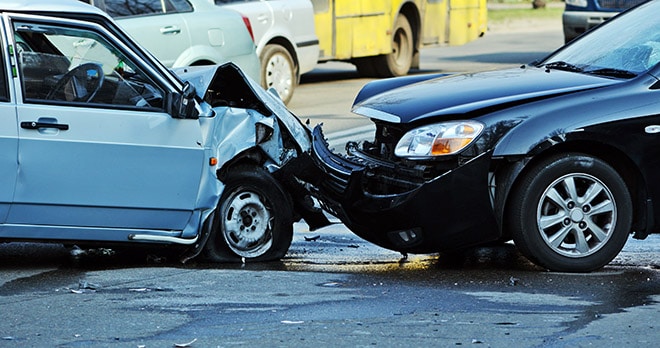What is ‘contributory negligence’? Why cyclists (and motorists) should know the law in the event of an accident

More often than not, cases brought on behalf of injured cyclists are made because another party (often a motorist) was a fault i.e. negligent. Not all collisions are wholly the fault of the motorist, as can be seen in the examples below. When considering allegations of ‘contrib’ on the part of the cyclist, an assessment needs to be made as to whether the cyclist was also negligent (at fault in some way for the accident) and whether that fault contributed towards the cyclist’s injuries.
A finding of ‘contrib’ against a cyclist following an accident will reduce the amount of money the injured cyclist receives when making a claim.
Before describing a few of the cases where ‘contrib’ has been a key battleground between the parties, this is what it means and how it should be applied to cases.
Section 1(1) of the Law Reform (Contributory Negligence) Act 1945
“Where any person suffers damage as a result partly of his own fault and partly of the fault of any other person or persons, a claim in respect of that damage shall not be defeated by reason of the fault of the person suffering the damage, but the damages recoverable in respect thereof shall be reduced to such extent as the court thinks just and equitable having regard to the claimant’s share in the responsibility for the damage...”
“What does that mean in plain English?” I hear you cry. Well, something like this:
If a cyclist’s conduct is negligent and contributes to the loss or damage he suffers, there will be an apportionment between the parties to reflect the fault on either side. This is usually done on a percentage basis e.g. responsibility for an accident might be apportioned on a 75:25 basis in favour of a cyclist in certain circumstances.
If one party was wholly at fault for the accident then there is, as should hopefully be obvious by now, no reason to consider the issue of contributory negligence on the part of the blameless cyclist. If the cyclist’s behaviour fell below a reasonable standard but did not contribute towards his / her injuries, then there should be no finding of ‘contrib’.
Examples of contributory negligence in case law
So, let’s look at a few interesting cases to see how the principle of ‘contrib’ is applied in practice:
1 - Phetan-Hubble v Coles
The key part though is that, just before the collision, the cyclist rode his bicycle off the nearside curb at an angle, into the path of the car. It was found that the car was speeding at 35mph. Had he been driving at a safer speed, in the region of 26 – 27mph, the claimant’s injuries would have been less severe.
At first instance, the Judge found that the cyclist’s contribution towards the accident was 50% but that it should be reduced to 33% to reflect his age (16 years at the time of the accident). On appeal, the finding was that the cyclist’s contributory negligence should be 50% i.e. he should be treated no differently just because of his young age in terms of personal responsibility.
The effect of this decision was to limit the cyclist’s damages to 50% of the sum he would have received if the motorist had been wholly to blame for the accident. Clearly, in this case, both parties were at fault and the Judge concluded that their conduct was equally to blame for the life changing injuries the Claimant suffered.
2 - McGeer v Macintosh
In this case, it was alleged that the defendant HGV driver was not in the correct lane to turn left and that he had failed to check his nearside mirror properly. He said that he checked his mirror before moving off. The judge rejected this contention and found that, had the HGV driver done so, and had he done so again before initiating his turn, he would have seen the claimant on her bicycle on both occasions as she was there to be seen.
So, the defendant was negligent for failing to check his nearside mirror properly. It was also found to be unsafe for him to assume his indicator would be visible to a cyclist approaching from behind – on the day of the accident, a car positioned behind the HGV blocked the claimant’s view of the indicator.
However, the judge didn’t find that the defendant was wholly to blame. Turning to the fault of the cyclist, the judge found that the claimant cyclist could have acted more carefully and should not have undertaken the HGV.
In making an apportionment of the % blameworthiness of the parties, the judge made reference to the causative potency (the potential of the vehicle to cause harm to another road user) – of the vehicles noting that the HGV was a potentially dangerous machine and the potential for injuring a cyclist was significant.
Taking everything into account then, the HGV driver’s liability was assessed at 70% and the cyclist’s contributory negligence was assessed at 30%.
3 - Rickson v Bhakar
In this case, the judge found that the van turned across the claimant’s side of the dual carriageway when it was unsafe to do so. The defendant admitted his fault so the issue for the judge to consider was; whether the cyclist was contributorily negligent.
The judge found that the collision happened a reasonable distance across the cyclist’s side of the dual carriageway (i.e. between the centre of the nearside lane and the line separating lanes 1 and 2). The claimant struck the defendant’s van near the rear wheel meaning that the defendant’s van had almost moved across the entire dual carriageway before the collision had happened.
The Judge found that the claimant had a clear view of the road ahead and had swerved at the last minute to avoid the defendant’s van. The opportunity was afforded to a reasonable cyclist, keeping a proper lookout, to avoid the collision and had the claimant braked earlier he would have avoided it entirely. It was therefore decided he was 20% contributorily negligent.
4 - Sinclair v Joyner
In this case, the judge made it clear that it was not the court’s job to expect perfection from a motorist, but in fact to assess the motorist’s duty to take reasonable care in the circumstances at the time. The judge found the defendant was driving her Volvo XC 90 at a reasonable speed on a narrow road she knew well, but she had failed to properly assess the risk that the claimant posed.
When the claimant cyclist would have been visible to the defendant, she was positioned towards the middle of the road and standing up on her pedals. The defendant said she did not believe the claimant was a particular hazard so thought slowing down was sufficient precaution. The defendant’s front seat passenger also added that the claimant was visibly grimacing or looking uncomfortable but the defendant said she did not notice this.
The judge found that the defendant had failed to properly assess the hazard the claimant posed on her bicycle as she drove round the bend and saw the claimant. The judge found that the defendant failed to stop when it was necessary to do so and that there was time to slow down so as to allow the claimant to pass safely by.
The judge also found that the claimant was negligent for riding so close to the centre of the road and that her position in the road materially contributed to the accident. The claimant’s (contributory negligence) was deemed to be 25% while the other 75% of the responsibility for the accident rested with the defendant. In reaching this decision, the Judge placed weight on the issue of causative potency; the potential to cause harm driving their car was far greater than that of the claimant riding her bicycle.
The claimant was also not wearing a helmet at the time. However, it was not found that she was negligent in choosing not to wear a helmet and there was no evidence that the absence of a helmet had contributed to making her injuries worse than they would otherwise have been. This is worth bearing in mind, as with seatbelts in cars (before they became mandatory) the courts will assess whether a cyclist’s decision not to wear a helmet amounted to contributory negligence if there is evidence that a helmet would have reduced the significance of the injuries suffered.
These real-life examples show how the courts weight different factors in assessing contributory negligence. It was difficult to assess ‘contrib’ in these cases. Had they been more straightforward and had the parties been able to agree the apportionment of liability between themselves, the cases would not have been heard in court.
It’s important for cyclists to understand the principle of contributory negligence and its interpretation in cycling cases to avoid any nasty shocks in the process of making a claim. However, it’s also important for motorists to understand that, in law, cyclists do bear responsibility for their actions in the event of an accident – despite what you might hear on the news!
If you’ve been injured as a result of a cycling accident, and think you might have a claim for compensation, please contact our specialist solicitors today.
Call now











